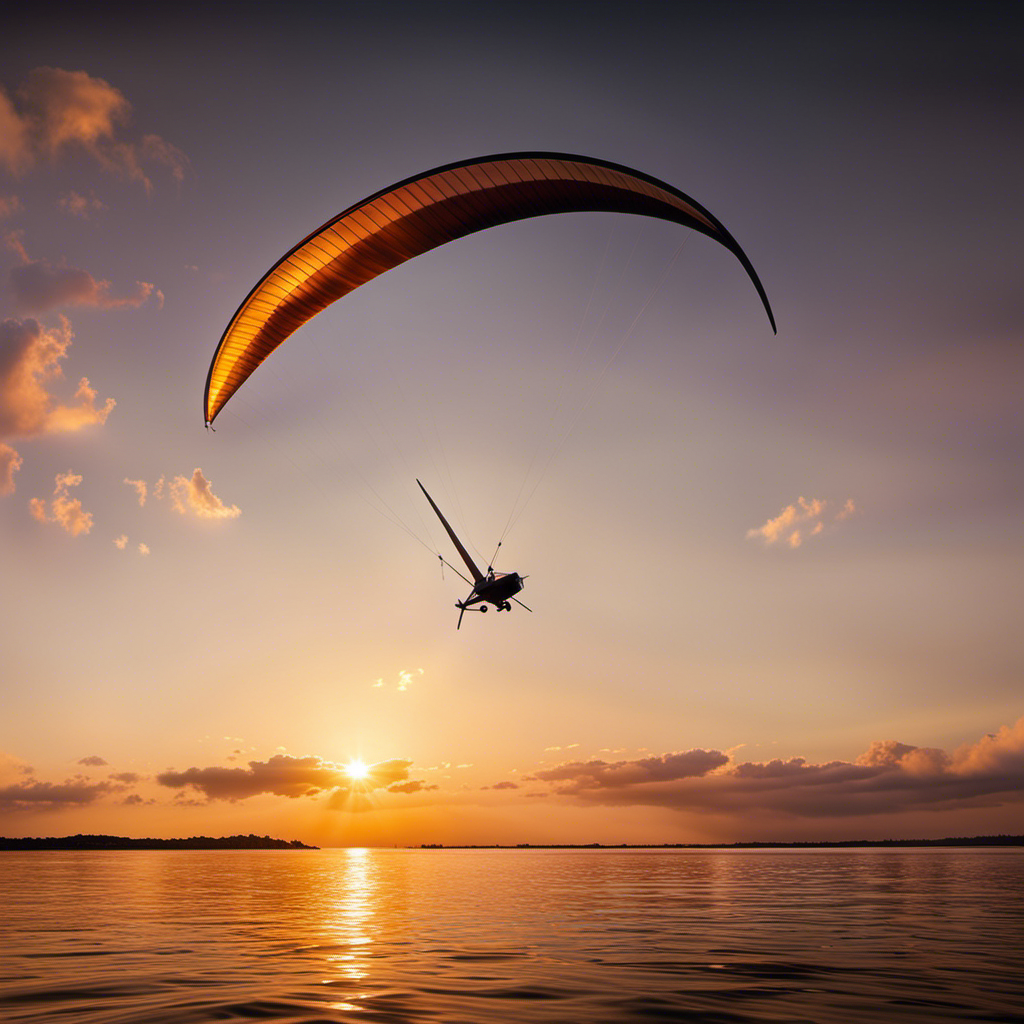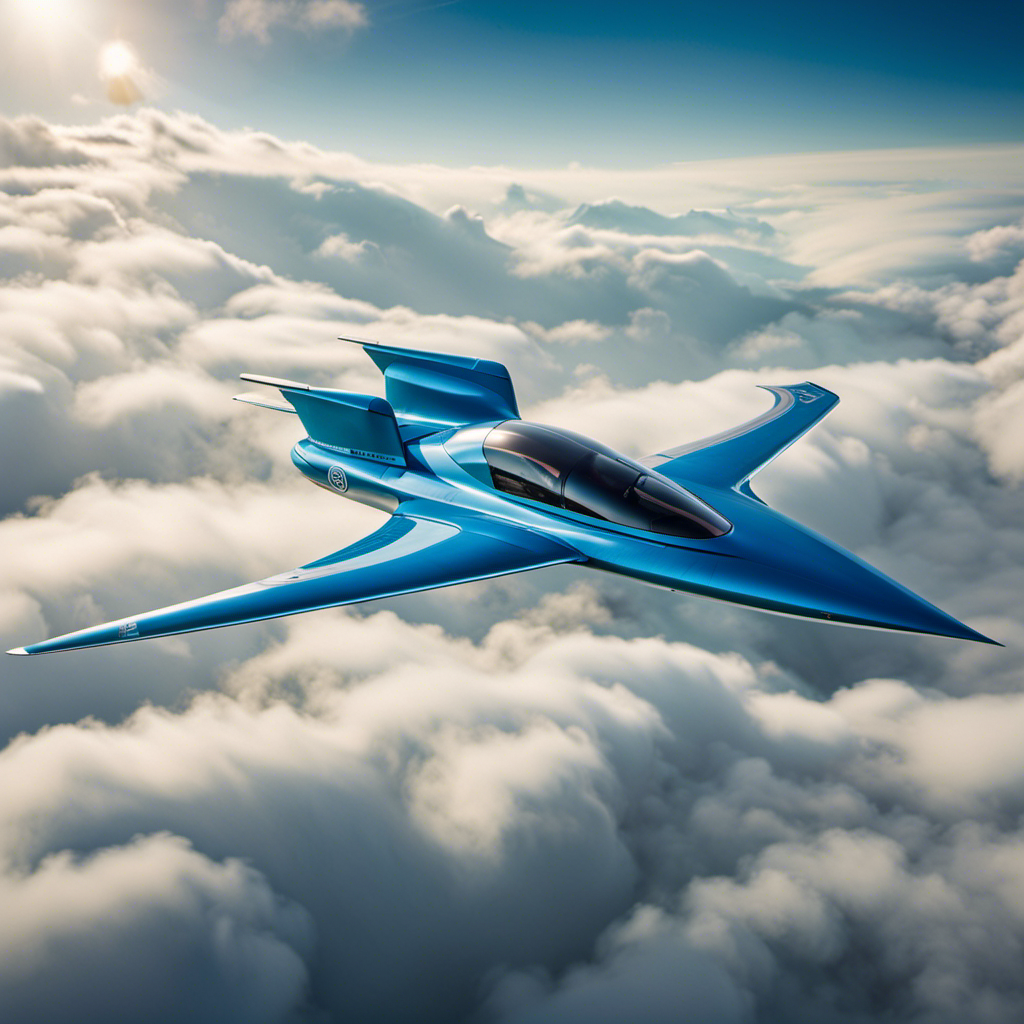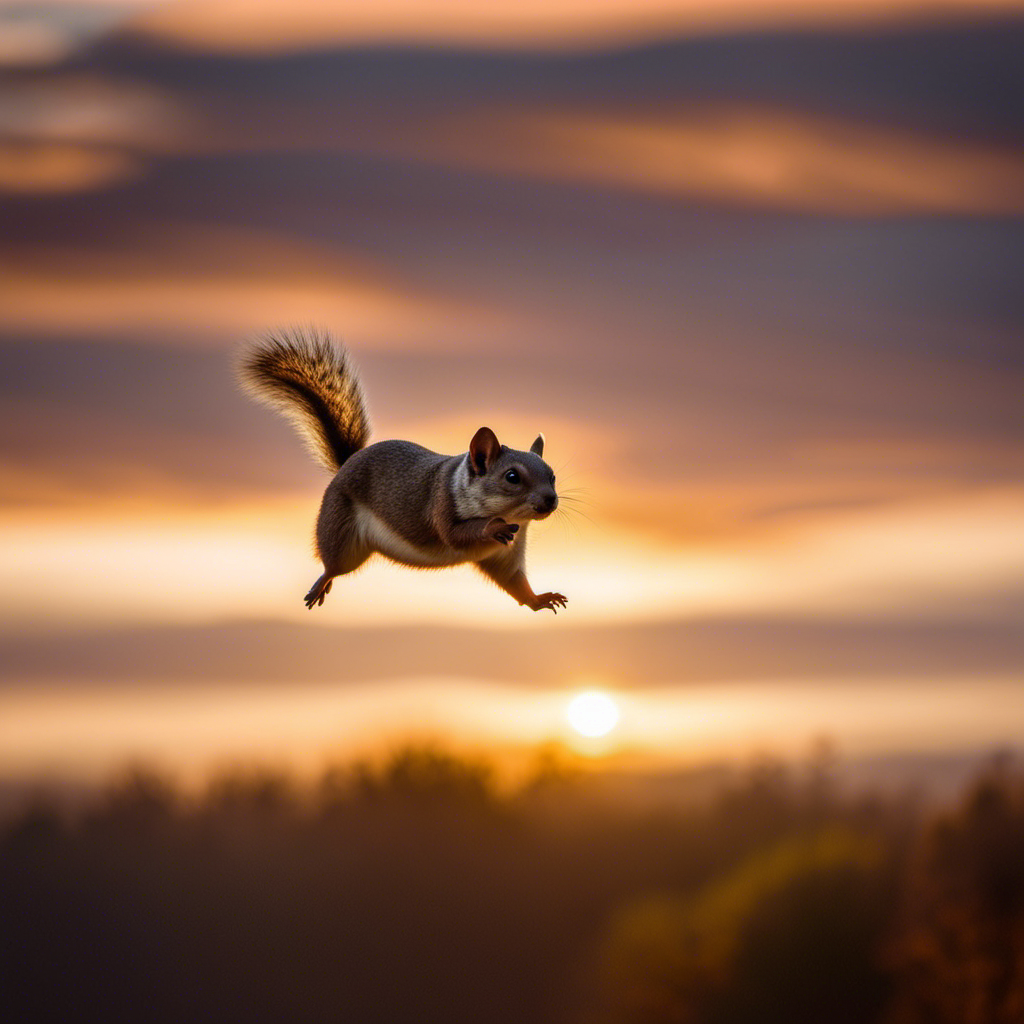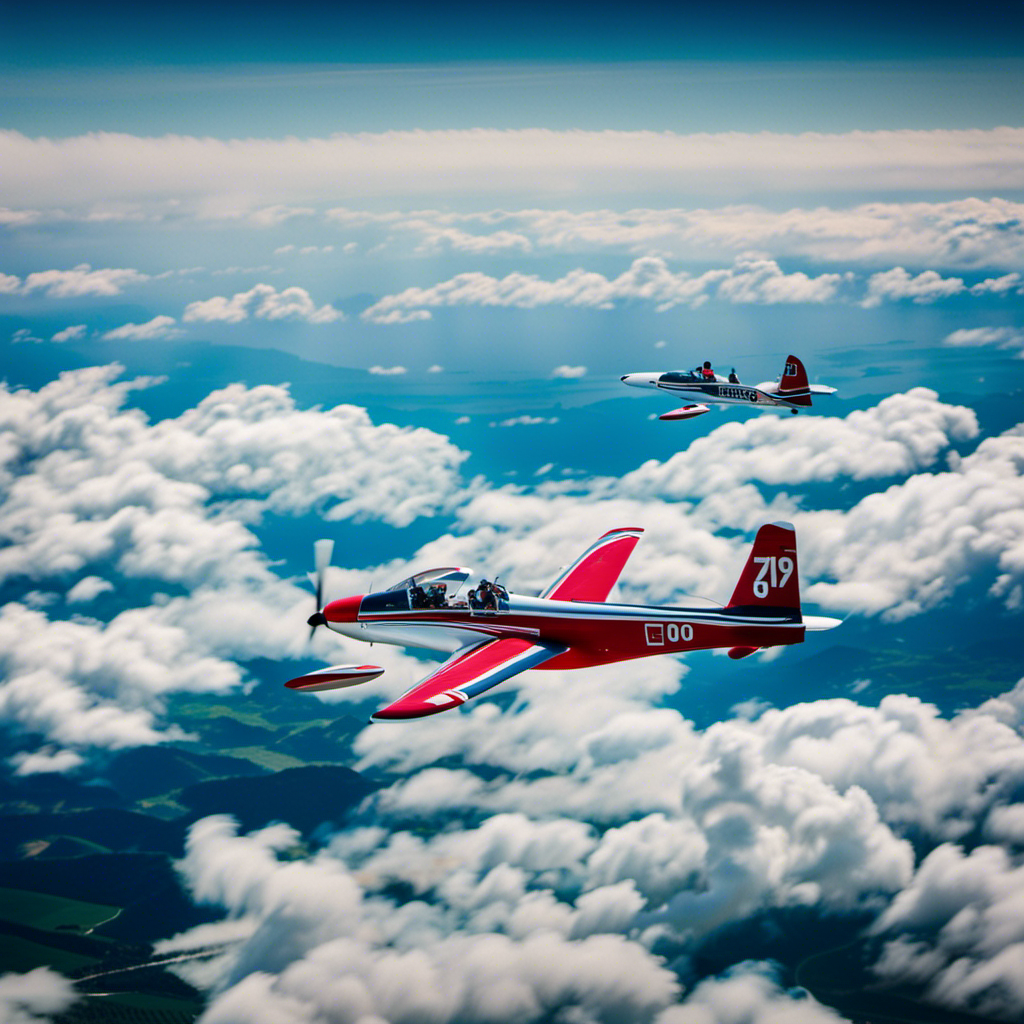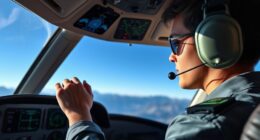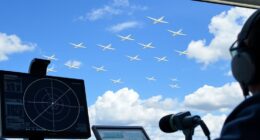Are you ready to experience the excitement of soaring through the sky?
Sail gliders, a remarkable innovation in aviation, are ushering in a new age of flight. With their sleek design and advanced technology, these cutting-edge aircraft offer a unique and thrilling way to explore the skies.
In this article, we will delve into the fascinating history, principles, and types of sail gliders. Join us as we uncover the professional applications, environmental benefits, and future developments in this awe-inspiring world of sail gliding.
Get ready to embark on an unforgettable adventure!
Key Takeaways
- Becoming a certified sail glider pilot offers rewarding experiences, dedication, and commitment.
- Sail gliders provide unique recreational opportunities, thrilling aerobatic maneuvers, and breathtaking panoramic views.
- Sail gliders have professional applications such as aerial photography, environmental monitoring, scientific research, wildlife conservation, and disaster response.
- Sail gliders offer environmental benefits such as low carbon emissions, minimal noise pollution, eco-friendly alternatives to powered aircraft, silent operation, and minimal disturbance to ecosystems.
The History of Sail Gliders
You’ll be fascinated to learn about the history of sail gliders and how they have evolved over the years.
The concept of gliding through the air has intrigued humans for centuries, and the development of sail gliders has been a significant milestone in aviation history.
It all began in the late 19th century when Otto Lilienthal, a German aviation pioneer, made significant advancements in glider design. Lilienthal’s gliders were primarily made of wood and featured a rigid wing structure.
These early sail gliders laid the foundation for future innovations in aerodynamics and control systems.
Today, sail gliders have evolved into sleek and lightweight machines, employing advanced materials and technologies.
Understanding the principles of sail glider flight is crucial to grasp the engineering marvels behind these incredible flying machines.
Principles of Sail Glider Flight
When piloting a sail glider, it’s important to understand the principles of how these aircrafts stay aloft. Sail gliders rely on a combination of lift and drag to soar through the skies. Lift is generated by the shape of the wings, while drag is the force that opposes the glider’s motion. By manipulating these forces, pilots can control the glider’s altitude and direction. To give you a better understanding, here is a table summarizing the key principles of sail glider flight:
| Principle | Description |
|---|---|
| Lift | Generated by the wings’ shape and air flowing over them |
| Drag | Opposes the glider’s motion and can be adjusted to control speed |
| Weight | The force exerted by gravity, which must be balanced by lift |
| Thrust | Generated by gravity and the glider’s forward motion |
Now that you have a grasp on the principles, let’s delve into the fascinating world of different types of sail gliders…
Types of Sail Gliders
When it comes to sail gliders, there are two main types to consider: single-seat gliders and two-seat gliders.
Single-seat gliders are designed for solo flights, allowing the pilot to experience the thrill of soaring through the skies on their own.
On the other hand, two-seat gliders are perfect for tandem flights and training purposes. They offer the opportunity for an instructor and student to fly together, providing valuable guidance and instruction during the flight.
Whether you prefer the independence of flying solo or the camaraderie of flying with a partner, there is a sail glider type that suits your needs.
Single-seat gliders for solo flights
If you’re looking for a thrilling and solitary flying experience, try out single-seat gliders. These sleek and nimble aircraft are designed for the adventurous pilot who wants to soar through the sky with only the wind as their guide.
Single-seat gliders, also known as sailplanes, are lightweight and aerodynamic, allowing for maximum maneuverability and efficiency. With a typical wingspan of around 12-18 meters, these gliders are capable of reaching altitudes of up to 10,000 feet or more.
Equipped with a control stick, pedals, and a variety of instruments, you’ll have everything you need to navigate the skies. So strap yourself in and prepare for an unforgettable journey into the realm of silent flight.
And if you’re interested in tandem flights and training, let’s explore the world of two-seat gliders together.
Two-seat gliders for tandem flights and training
Ready to take your flying experience to the next level? Strap yourself into a two-seat glider and soar through the sky with a trained pilot by your side. Two-seat gliders offer a unique flying experience, allowing you to share the thrill of gliding with a friend or family member.
Here are three key features of two-seat gliders:
-
Dual Controls: Two-seat gliders are equipped with dual controls, which means both you and the pilot can take turns flying the aircraft. This allows you to learn the basics of gliding and gain hands-on experience under the guidance of an experienced pilot.
-
Enhanced Safety: With a trained pilot by your side, you can rest assured that safety is a top priority. The pilot will handle the takeoff and landing, as well as monitor the flight conditions, ensuring a smooth and secure flight.
-
Training Opportunities: Two-seat gliders are commonly used for training purposes. Whether you’re a beginner or an experienced pilot looking to advance your skills, flying in a two-seat glider provides valuable training opportunities to improve your understanding of glider operations and techniques.
As you explore the world of sail gliders, you’ll discover the fascinating advancements in technology that have revolutionized this form of flight.
Advanced Technology in Sail Gliders
The advanced technology in sail gliders has revolutionized the world of aviation. These innovative aircraft are equipped with state-of-the-art instruments and systems that enhance safety, performance, and overall flying experience.
The use of lightweight composite materials, such as carbon fiber, has made sail gliders more aerodynamic and efficient, allowing for longer flights and increased maneuverability.
Advanced navigation systems, including GPS, enable pilots to accurately track their position and plan routes with precision. Additionally, modern sail gliders are equipped with electronic variometers that provide real-time information about vertical speed and glide ratio, helping pilots optimize their flight path.
The integration of advanced technology in sail gliders has made flying more accessible and enjoyable, attracting a new generation of aviation enthusiasts.
Now, let’s delve into the training and certification required for sail glider pilots, ensuring safety and proficiency in this exhilarating form of flight.
Training and Certification for Sail Glider Pilots
To become a certified sail glider pilot, you’ll need to complete a rigorous training program that covers a wide range of skills and knowledge. Here are the key aspects of the training program:
-
Ground School: You’ll learn about aerodynamics, meteorology, navigation, and flight planning. Understanding these principles is crucial for safe and successful sail glider operations.
-
Flight Training: You’ll receive hands-on instruction in sail glider handling, launching, and landing techniques. You’ll also practice emergency procedures and develop your decision-making skills.
-
Theory Exams: You’ll need to pass written exams on topics such as air law, flight rules, and safety regulations. These exams ensure that you have a comprehensive understanding of the theoretical aspects of sail glider piloting.
-
Solo Flights and Checkrides: Once you’ve gained sufficient experience and knowledge, you’ll have the opportunity to fly solo and demonstrate your skills during checkrides with certified instructors.
Becoming a certified sail glider pilot requires dedication and commitment, but the rewards are well worth it.
Now, let’s explore the exciting recreational opportunities available to sail glider pilots.
Recreational Opportunities with Sail Gliders
Exploring the skies with sail gliders offers a thrilling and unique recreational experience. With their lightweight structure and large wingspan, sail gliders rely on air currents and thermal updrafts to stay aloft, allowing you to soar through the air like a bird.
The controls are simple yet precise, with a control stick for steering and foot pedals for controlling the rudder. As you gain experience, you can perform aerobatic maneuvers such as loops and spins, adding an adrenaline rush to your flying adventures.
The panoramic views from the cockpit are breathtaking, giving you a new perspective on the world below. Whether you’re gliding over mountains, coastlines, or vast open plains, the serenity and freedom of sail gliding cannot be matched.
Transitioning to the professional applications of sail gliders, these versatile aircraft are also used for aerial photography, environmental monitoring, and even scientific research.
Professional Applications of Sail Gliders
Gain a unique perspective on the environment from above as you capture stunning aerial photographs with sail gliders. These innovative aircrafts are not only used for recreational purposes, but also have a wide range of professional applications.
Here are four ways sail gliders are being utilized in various industries:
-
Environmental Monitoring: Sail gliders equipped with sensors and cameras can collect valuable data on air quality, temperature, and ocean currents, helping scientists better understand the environment.
-
Wildlife Conservation: Sail gliders provide a non-intrusive way to monitor and study wildlife populations, enabling researchers to track migration patterns and assess habitat health.
-
Disaster Response: In emergency situations, sail gliders can be deployed to survey affected areas, assess damage, and aid in search and rescue operations.
-
Infrastructure Inspection: With their ability to cover large areas quickly and efficiently, sail gliders are utilized for inspecting infrastructure such as power lines, pipelines, and bridges.
Environmental Benefits of Sail Gliders
You can appreciate the environmental benefits of using sail gliders as you witness their low carbon emissions and minimal disturbance to ecosystems. Sail gliders, also known as glider planes or sailplanes, are aircraft designed to fly without an engine, relying solely on the natural forces of wind and thermals. This unique design not only provides an exhilarating and serene flying experience, but also offers significant advantages in terms of environmental impact. By using renewable energy sources, sail gliders produce zero emissions, making them an eco-friendly alternative to traditional powered aircraft. Additionally, their silent operation and ability to soar gracefully through the air minimizes noise pollution and disturbance to wildlife. The following table highlights some of the key environmental benefits of sail gliders:
| Environmental Benefit | Description |
|---|---|
| Low carbon emissions | Sail gliders do not require fossil fuels, resulting in significantly reduced carbon dioxide emissions. |
| Minimal noise pollution | The silent operation of sail gliders minimizes noise pollution, making them less disruptive to wildlife. |
| Eco-friendly alternative | By utilizing renewable energy sources, sail gliders offer a sustainable and environmentally friendly flying option. |
As sail gliders continue to gain popularity, it is important to address the challenges and future developments in this field.
Challenges and Future Developments in Sail Gliders
To understand the challenges and future developments in this field, it’s important to consider the advancements being made in the technology of sail gliders.
Sail gliders, also known as sailplanes, are aircrafts that are designed to fly without an engine. They rely on the natural forces of wind and thermals to stay airborne.
One of the main challenges in sail glider technology is improving their efficiency and range. Researchers are constantly working on developing more aerodynamic designs and lightweight materials to enhance performance.
Another area of focus is the integration of advanced navigation systems and weather forecasting tools to improve safety and optimize flight paths.
As technology continues to evolve, the future of sail gliders looks promising, with the potential for increased range, improved performance, and enhanced safety features.
This constant innovation in sail glider technology paves the way for an exciting future in the world of flight.
The Thrill of Sail Gliding
As a sail glider enthusiast, nothing compares to the thrill of soaring through the sky with only the wind as your engine.
When you take to the skies on a sail glider, you become one with nature, harnessing the power of the wind to achieve flight.
The sensation of gliding through the air is unmatched, as you feel the rush of the wind against your face and the weightlessness in your body.
The beauty of sail gliding lies in its simplicity and elegance. It is a pure form of flight, where you rely on the forces of nature to carry you through the air.
The freedom and serenity you experience while sail gliding is truly unparalleled, making it an incredible adventure for those who seek the ultimate flying experience.
Conclusion
In conclusion, sail gliding offers an exhilarating and eco-friendly way to experience the thrill of flight. With advancements in technology and the availability of training and certification programs, more people than ever can enjoy this unique form of aviation.
Did you know that sail gliders can reach altitudes of up to 35,000 feet? That’s higher than the cruising altitude of most commercial airplanes!
So, if you’re looking for a new adventure that combines the beauty of soaring through the skies with environmental consciousness, sail gliding is the perfect choice. Start your journey today and embrace the new age of flight.
